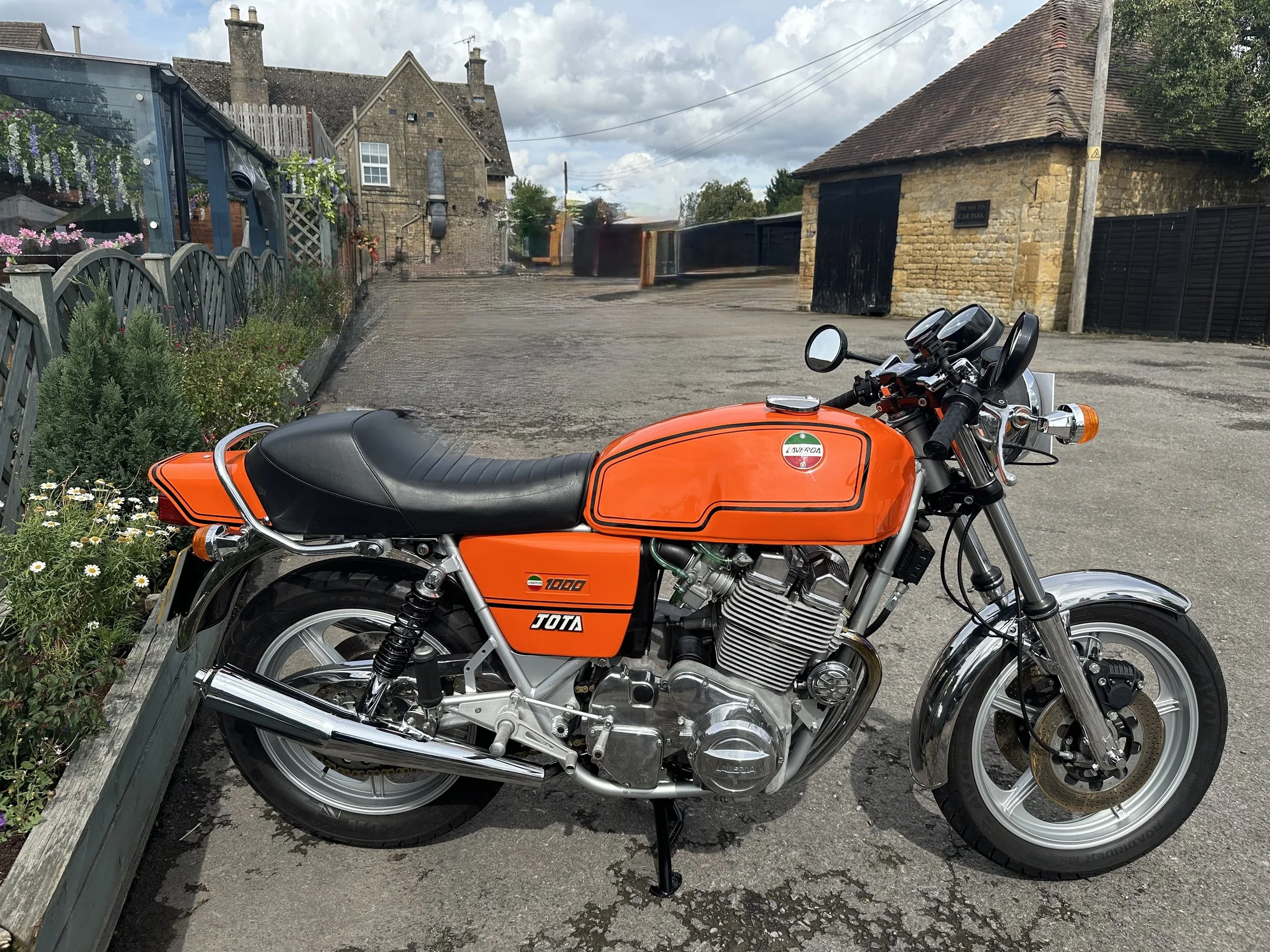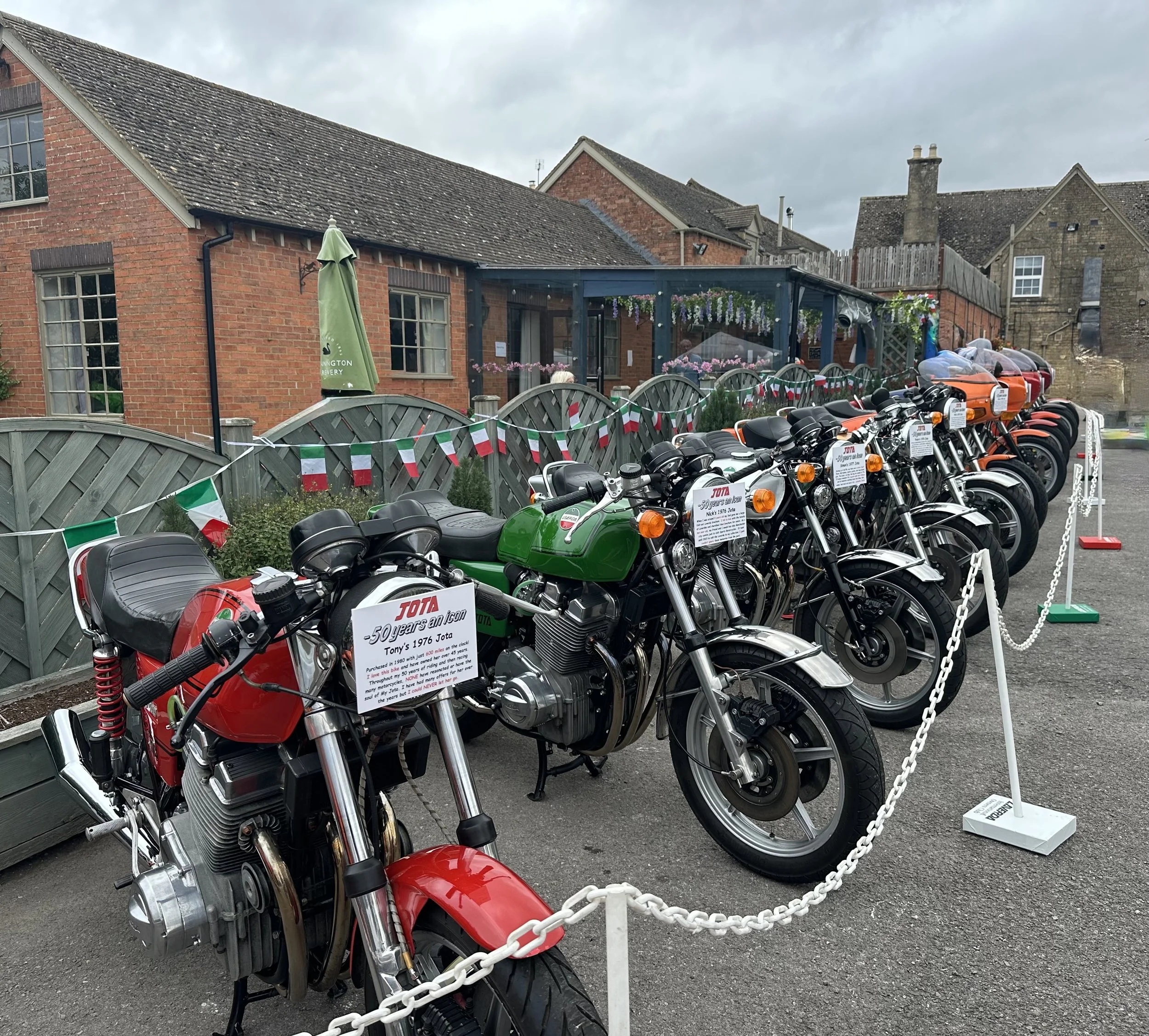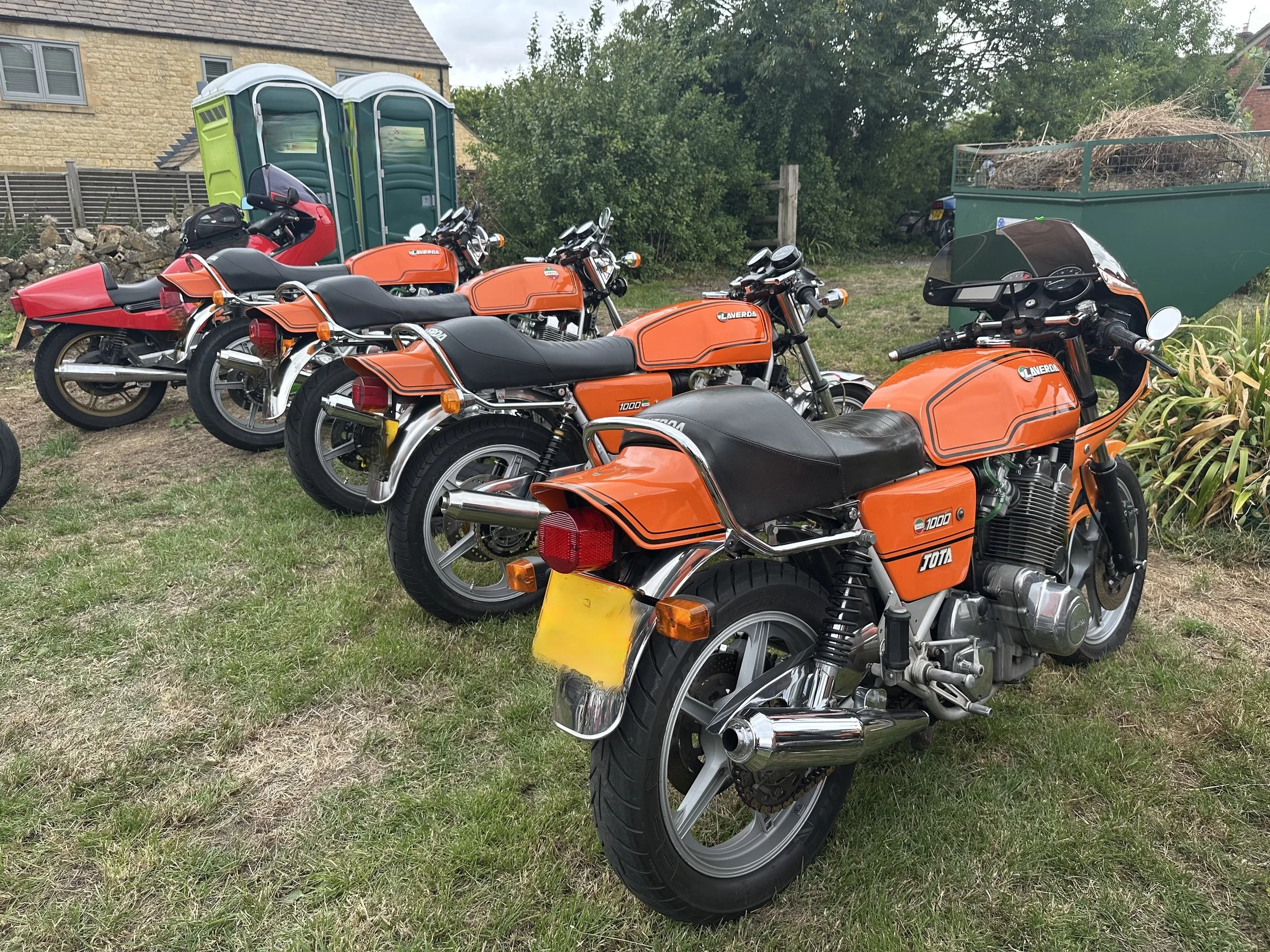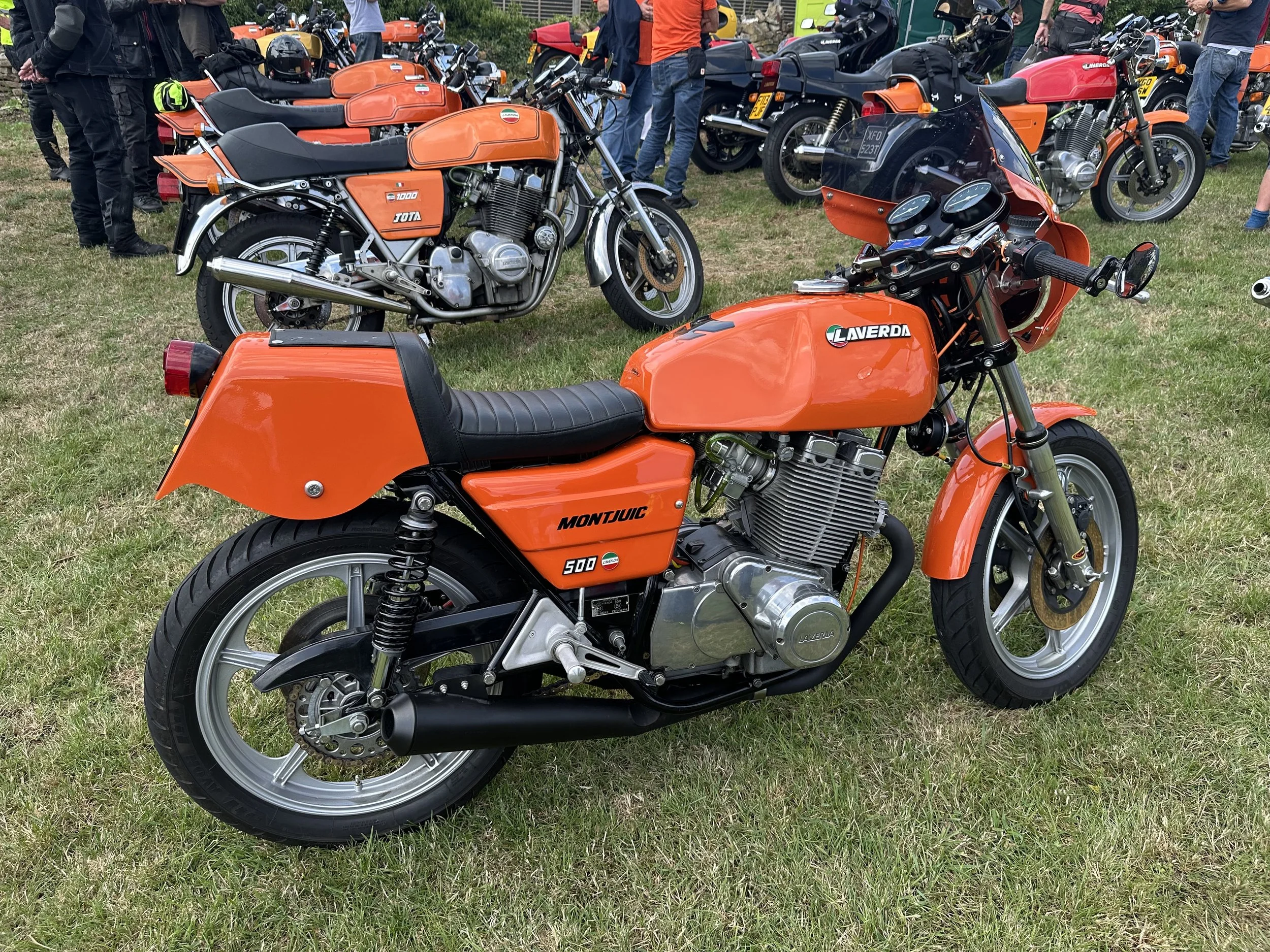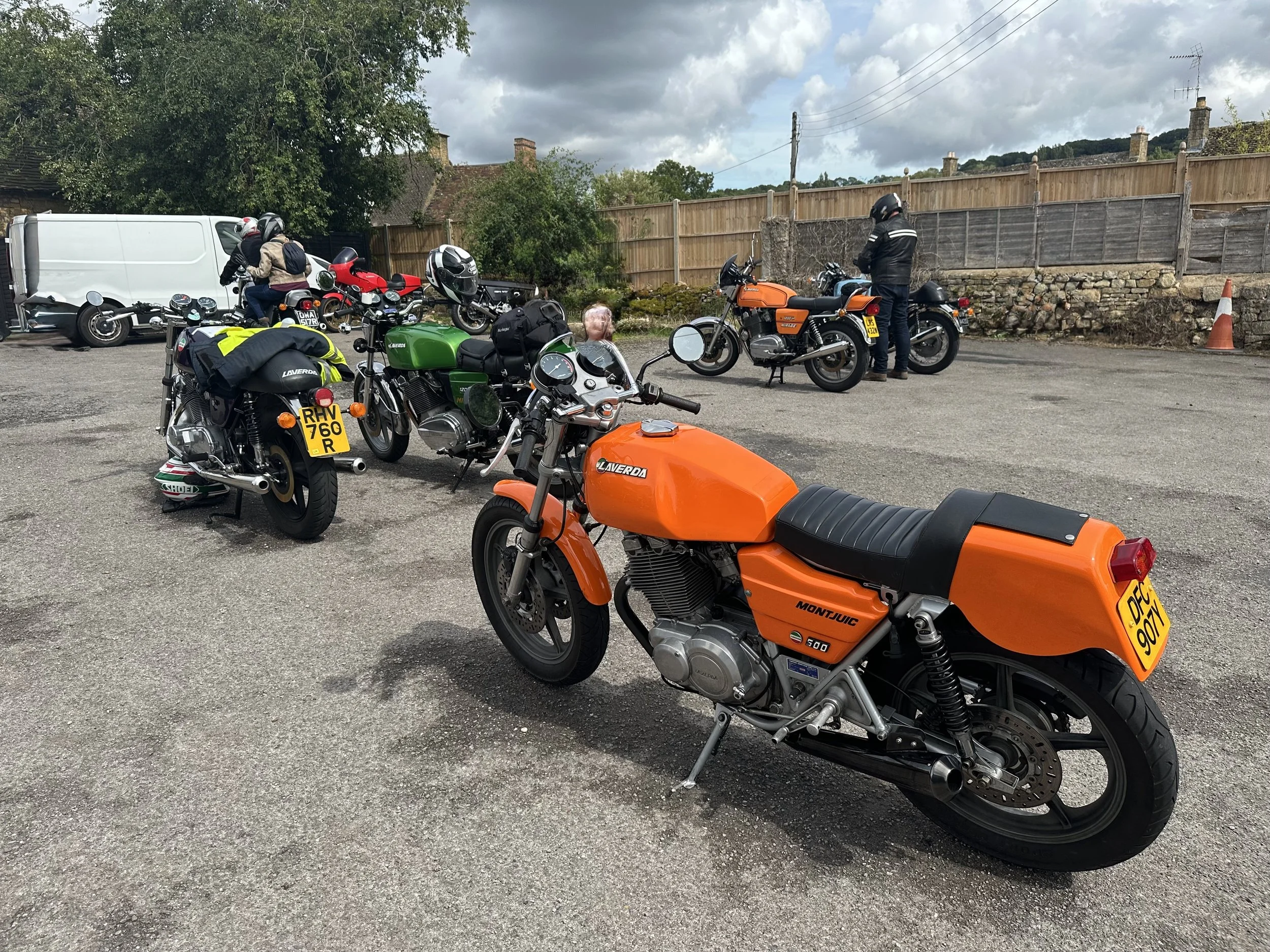Forever Autumn
As the legendary Laverda Jota turns fifty, a gathering in the Cotswolds salutes a machine that once ruled the roads and fuelled the dreams of youth.
Pete Davies, Richard & Roger – The Slater Brothers – Phil Todd, Roger Winterburn, and others… These names may mean little to you — unless you came of age in the late 1970s, when they peppered the pages of the motorcycle magazines of the day.
All were, and remain, synonymous with developing, maintaining, tuning, or racing Laverda motorcycles—specifically, the legendary Jota. This thunderous, triple cylinder, 981cc fire-breathing monster boasted the Top Trumps claim of being the world’s fastest production motorcycle. It also earned a place among the bedroom posters of many a fevered youth, right alongside the Lamborghini Countachs and Farrah Fawcett-Majors.
Fifty years on
Now, another name from Laverda lore — Malcolm Cox — has orchestrated a remarkable gathering. At the New Inn pub in the honey-coloured village of Willersey, deep in the bucolic Cotswolds, he’s brought together many of these legendary figures from the USA’s West Coast, Australia, and elsewhere.
“This has never happened before and can never happen again,” Malcolm says with characteristic oratorial flourish, addressing the assembled crowd.
He’s right. Many of the luminaries are now in their eighties or older. Most owners are in their sixties or seventies. Yet over 100 Jotas are on display—ranging from pristine, box-fresh Concours d’Elegance examples to heavily customised versions and everything in between. It's an arresting sight. Few motorcycles, in any form, have the presence of Breganze’s finest.
An Italian Count
The Jota has a Romanesque, almost aristocratic profile—frame, tank, body panels—contrasting with the brutalist lines of the rough-hewn engine block. It may lack the feminine beauty of the Ducati flagship of that, or any, era, but it still manages to set pulses racing, even now.
Despite the drama it exuded, it was the 500cc twin—the Montjuic—that I lusted after in 1980. The Jota always seemed faintly terrifying, like it could tear you limb from limb. Maybe it was the apocryphal tales of dislocated shoulders from the violent acceleration of the famously lumpy 180-degree engine. Or the rumour that it only responded to tough-love handling to get it to go round corners predictably.
There was also the pugilistic riding position those adjustable Brevettato bars forced the jockey into, the gear-change on the 'wrong' side, and a clutch so heavy it could only be operated by the most enthusiastic of sinistral onanists.
To a comparatively puny 17-year-old, the Jota seemed unapproachable and out of reach. Odd, with hindsight, as it only produced 97 horsepower and weighed 235 kilograms. My two current reference points are a 2020 Ducati Panigale V2, which produces 60% more power and weighs 20% less, and a BMW K1600GT, similarly powerful but 65 kilograms heavier. Neither feels particularly intimidating.
The Son of Jota…
The Montjuic—often called the “Son of Jota” in the quasi-biblical language that has clung to these mythical machines—felt just a little more attainable. But in truth, neither was within reach. The Montjuic listed at £2,250 and the Jota nearly £3,000—around £10,000 and £15,000 in today’s money—while I was earning £5.39 a day behind the counter in the Record Department at Boot’s the Chemists in Burton-upon-Trent…
Now, at sixty-two and part of the “youthful wing” of Laverda owners, I’m here on the Montjuic I bought in 2004 for £100 less than it cost new, back in the day. Like most owners, I’ve lavished thousands of hours and pounds since, restoring and maintaining it.
But the chat amongst us today is no longer about tuning hacks, performance mods or cornering technique—it’s about how long it takes for your hips, knees or back to give out on a ride. And there’s also a grim consensus that the marque is fading— slowly, defiantly, reluctantly— from view. Sale values peaked five years ago, when the last flush of baby boomers tried to reclaim the youth that eluded them the first time around.
The lure of Laverda
The other great Italian names of the 1970s and ’80s are still around, though often in compromised form. Ducati, now part of the Volkswagen Group, continues to out-BMW BMW in technical sophistication and build quality, so lacks the idiosyncrasies intrinsic to the brand. MV Agusta limps on through multiple ownership changes, although still managed to create possibly the most beautiful motorcycle ever—the 750 F4S.
Moto Guzzi has found its niche, albeit without a model as iconic as the fabled Le Mans, while Benelli and Moto Morini are now Chinese-owned— effectively undergoing a brand blood transfusion — and no longer Italian in anything but name.
But not Laverda. The Breganze factory — surrounded by the rich agricultural land once ploughed and harvested by the Laverda farm machines that preceded motorcycle production — closed in 1983. The firm simply couldn’t evolve quickly enough to meet the price and performance demands set by technically superior Japanese models. So, after a few aborted attempts to revive the brand, it finally expired in 1990 and survives only as a nameplate outside the giant Agco factory that now engulfs the original site.
It’s later than you think
In the gloaming of an early August late afternoon, the event is winding down. Jotas are loaded onto trailers or ridden away, that familiar basso profundo off-beat thump from the three-into-two Lafranconi exhaust heralding each departure. Autumn is coming. And while this isn’t quite a rage against the dying of the light, there’s no doubt it’s slowly fading from the screen.
I’m chatting with two other Montjuic owners. We’re all of the same vintage, recently retired, and all from Derby. Now lined and grey, we once attended schools just a few miles apart. And, as teens, we rode our Honda SS50s or Yamaha FS1Es to the Laverda showroom at The Cavendish in Normanton, just off the ring road, to stare longingly through the plate glass at the different world these magnificent beasts represented.
The final couplet from Hilaire Belloc’s The South Country comes to mind—first published in 1902, yet eerily apt for this bittersweet, final gathering:
“And the men that were boys when I was a boy, shall sit and drink with me.”
But it’s another Belloc verse—written not far from Willersey—that offers the perfect coda:
“The quiet evening kept her tryst:
Beneath an open sky we rode,
And passed into a wandering mist
Along the perfect Evenlode.”
